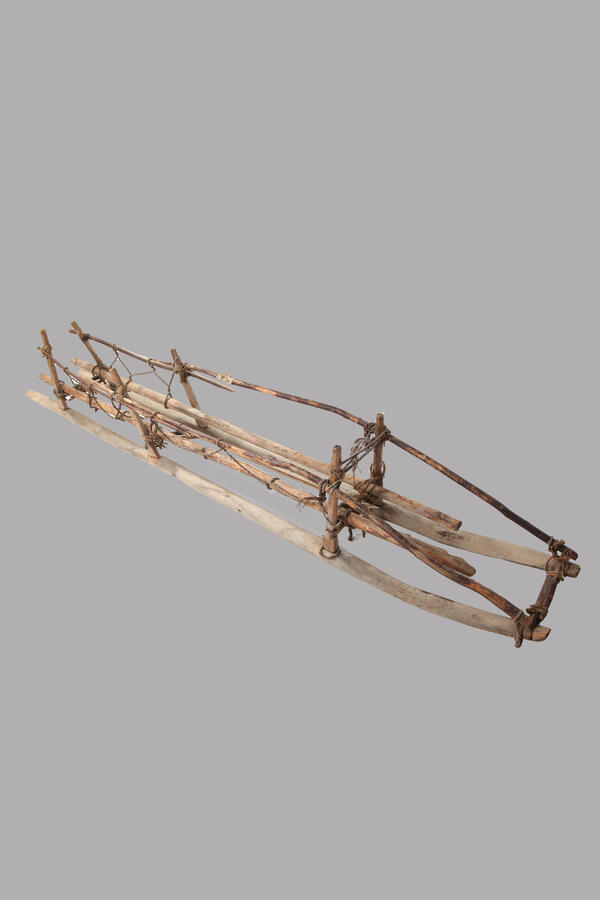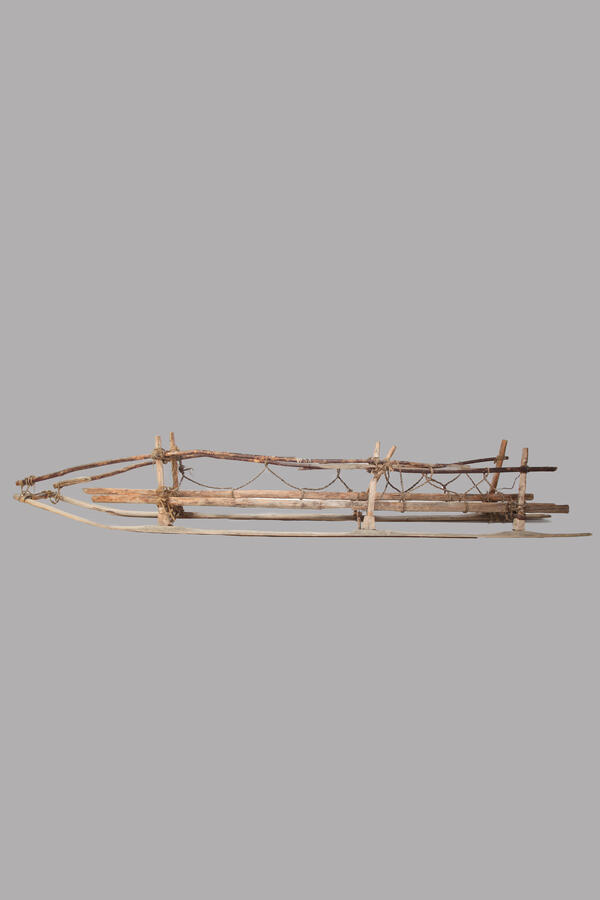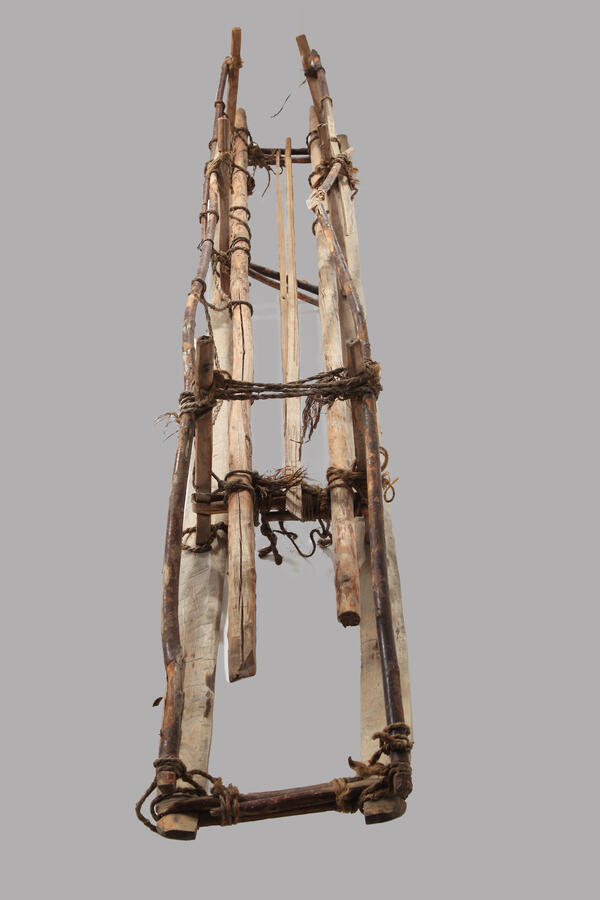A narty sled is a light wooden sled that is 2–4 meters long, a traditional means of travel and transportation of goods for Komi-Permyak people. There are two types of such sleds: those pulled by dogs and reindeer, and those pulled by a person on his own. The hunting grounds of the Komi people could be 100 kilometers away from home. In summer they covered the distance by boat, and from autumn to spring they used a narty and skis. The most ancient ski wreck found on the territory of the Komi Republic is 8,000 years old. The design of the sleds has not changed much over several tens of centuries, either.
People transported animal skins, hunting gear, food supplies, and game using man-drawn sleds. A rope with a strap at the end was tied to the bow of the sled, and the hunter put it over his shoulder or on his chest so that the straps went under his arms. Sometimes dogs helped the hunter to pull the loaded sled. On difficult long journeys, people harnessed three or five dogs in a single file, one after the other.
A dog harness consisted of a ring-shaped collar, a strap, sewn to the collar at both ends, ropes and a back crossbar. The harness covered the dog’s body and ran behind, under its tail; the strap of the cross-bar passed under the dog’s belly and was fastened with a wooden button attached to the strap, to which the sled was also fastened. If dogs pulled heavy sleds with their chests, they got tired much less. There were many ways of harnessing a dog to the sled, but there is not a standard one, because the use of dog pulling in a man-drawn sled was occasional.
An experienced hunter could assemble their narty a few days before the hunting trip or right in the forest using available resources. Komi-Permyaks used willow, bird cherry, linden, birch and spruce. The runners were up to 10 centimeters wide; framed vertical poles, spurs, were attached to them. Their number depended on the length of the sled and the needed load capacity. With the weight of up to 20 kilograms a sled could carry a load of up to 200 kilograms. Even loaded sleds could run on the snow with no track or path, without turning over or getting stuck, and notwithstanding the lightweight construction, they were very strong and reliable.
People transported animal skins, hunting gear, food supplies, and game using man-drawn sleds. A rope with a strap at the end was tied to the bow of the sled, and the hunter put it over his shoulder or on his chest so that the straps went under his arms. Sometimes dogs helped the hunter to pull the loaded sled. On difficult long journeys, people harnessed three or five dogs in a single file, one after the other.
A dog harness consisted of a ring-shaped collar, a strap, sewn to the collar at both ends, ropes and a back crossbar. The harness covered the dog’s body and ran behind, under its tail; the strap of the cross-bar passed under the dog’s belly and was fastened with a wooden button attached to the strap, to which the sled was also fastened. If dogs pulled heavy sleds with their chests, they got tired much less. There were many ways of harnessing a dog to the sled, but there is not a standard one, because the use of dog pulling in a man-drawn sled was occasional.
An experienced hunter could assemble their narty a few days before the hunting trip or right in the forest using available resources. Komi-Permyaks used willow, bird cherry, linden, birch and spruce. The runners were up to 10 centimeters wide; framed vertical poles, spurs, were attached to them. Their number depended on the length of the sled and the needed load capacity. With the weight of up to 20 kilograms a sled could carry a load of up to 200 kilograms. Even loaded sleds could run on the snow with no track or path, without turning over or getting stuck, and notwithstanding the lightweight construction, they were very strong and reliable.







